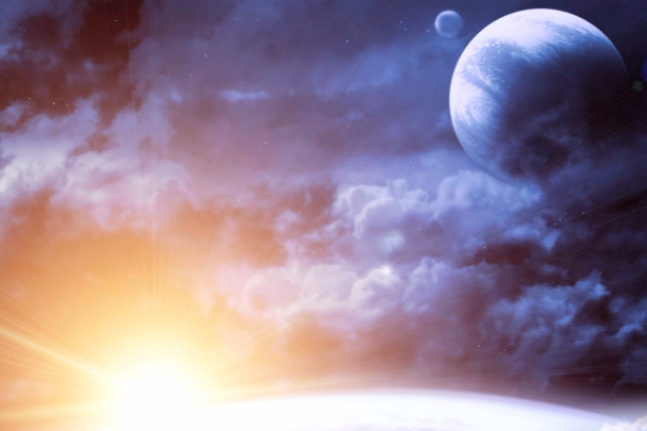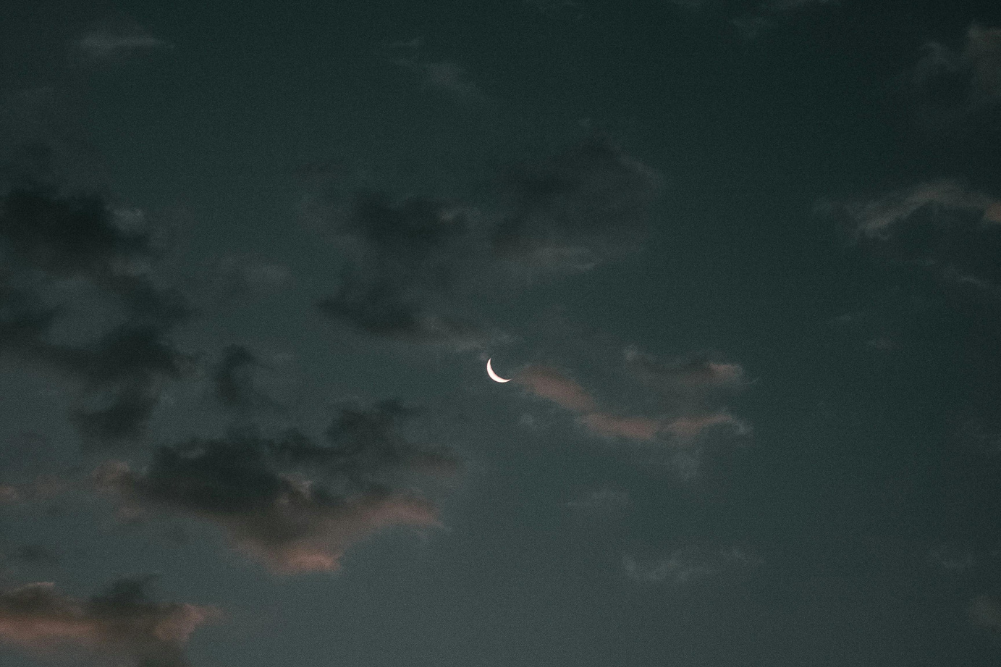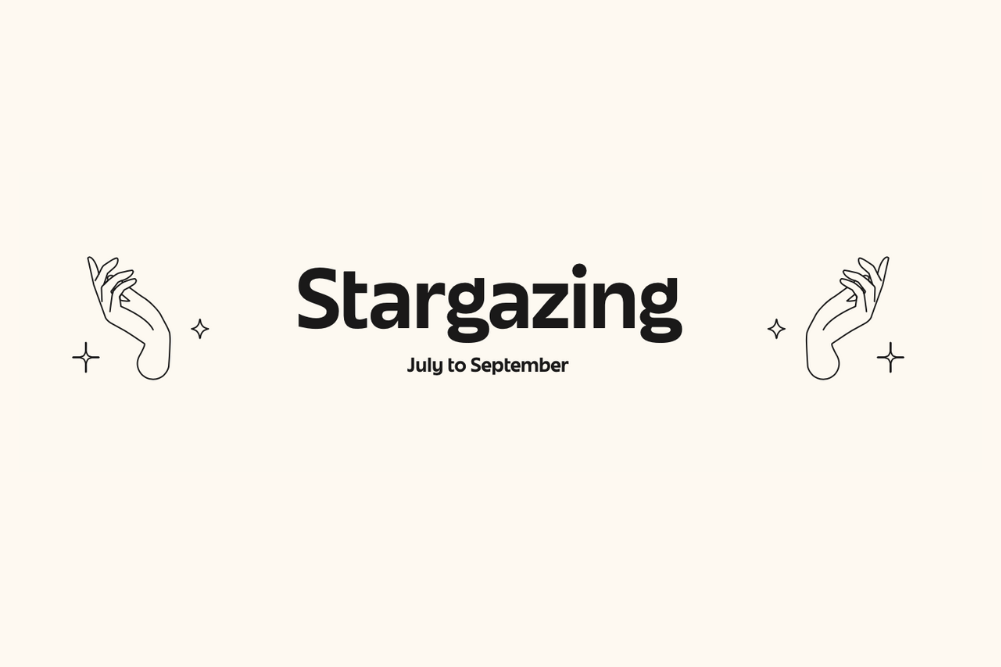Having a mid-life crisis? You may be experiencing a planetary return
Everyone has heard of the mid-life crisis, right? If you are interested in astrology, you may also have heard terms like Saturn Return, Lunar Return and even Chiron Return. But what do they mean? Is there any validity to them? Are they anything more than just catchphrases?
Indeed they are. And understanding what these important milestones mean will, if you are a young person, allow you to plan your life accordingly. If you are older, it will enable you to understand what those changes meant, as well as what led you to be where you are today.
Turning points & the mid-life crisis
There are many such milestones — points where you reach a crossroads and can turn either left or right — throughout life. They may manifest differently for each individual but, at their heart, they will be saying much the same thing to every one of us.
Three major astrological crossroads exist in the average life: the late 20s, the early 40s and the late 50s. Between, as well as before and after, there are several less-dramatic turning points, each one preparing you for the next.
Some of these turning points are just that, a time when you turn a corner, whereas others are crossroads where you have to make sometimes intense choices about which path to take.
Imagine your life to be like a wave, as in a soundwave. It climbs and climbs until it reaches a peak, then it turns around and starts to come down to the baseline, at which point it turns to go up again. The peak of this wave is the major crisis or turning point in your life: what is known as the “mid-life crisis”. Let’s have a look at what happens from an astrological perspective to bring you to this point.
Planets in focus
The two main rulers of the various cycles you experience are Uranus and Saturn. Jupiter is always there, too, acting as wingman, and the two “super powers”, Neptune and Pluto, hover in the background ready to give a nudge if you get slightly off track.
Uranus: cycles of chaos
Uranus is the god of change. He is the fastest of the modern or outer planets and takes 84 years to complete one orbit of the Sun. The average human lifespan is 84 years. Coincidence? I think not. Uranus is the planet of life. I know the Sun is considered to be your life force, but the Sun is the way you live the life that is overseen by Uranus. During the average lifetime, Uranus will touch every single area of your life just once, creating chaos and change in that area.
Together, Uranus and Saturn lead to a letting go of some kind, whether it is a lifestyle, a relationship or an ambition.
In your chart, Uranus will make a 30° aspect to himself every seven years, so approximately every seven years you reach some kind of turning point. Some of these turning points are just that, a time when you turn a corner, whereas others are crossroads where you have to make sometimes intense choices about which path to take.
At the heart of these seven-year points is the energy of Uranus: disruption. Something happens in your life or to you that disrupts the status quo. This can lead to emotional, mental or physical chaos which then invites or forces you to move up the evolutionary ladder.
Saturn: stop & take stock
Saturn is the slowest of the visible planets and takes approximately 29.5 years to orbit the Sun. During the average lifespan, Saturn touches every area of your life, as represented in your natal chart, at least twice and, for many, three times. As the average human lifespan lengthens, many will move into a fourth Saturn cycle, if only for a short while.
Approximately every two-and-a-half years, Saturn makes a 30° aspect to himself. At those times, events can make you stop and take stock. Change that involves letting something go on an emotional, mental or physical level is likely. You may try to hang on to whatever it is but, by doing so, your hold yourself back.
Jupiter, the Sun & growth
The cosmic wingman, Jupiter is the big boy of the planetary pantheon, but he is also relatively fast-moving so you won’t always notice his effects. Jupiter takes 12 years to complete an orbit of the Sun and makes a 30° aspect to himself every 12 months.
Jupiter will complete seven orbits of a chart in the average lifetime. Jupiter’s aspect to himself every 12 months is reinforced by the Sun returning to its own place in your chart, which happens every 12 months on or near your birthday. This means that, as you age, you are regularly given opportunities for growth and expansion on emotional, mental and physical levels.
Neptune: dreams & illusion
So the stage is set. What about the two heavies, though, Neptune and Pluto? Neptune takes 165 years to make a single orbit of the Sun, which means he makes a 30° aspect to his natal position approximately every 14 years. On average, this will happen six times in your life, however if you make it into your mid 90s, there will be a seventh time.
Neptune strips away illusions and provides the means to escape reality, which can work for or against you. Neptune can create dreams and imaginative thinking but it can also lead you into dark places, especially if you have not been paying attention to what Uranus and Saturn have been trying to tell you.
The force of Pluto
Pluto takes 248 years to orbit the Sun, which means Pluto will aspect himself in your chart every 21 years on average. However, because of Pluto’s elliptical orbit, it spends much longer in some signs than it does in others. For some, Pluto will provide seven turning points in their lifetime but, for most of us, it will only be six. For younger generations coming up it may only be five.
Pluto is the enforcer. If you have refused to listen, refused to choose the destiny laid out for you or to make those choices asked of you by Saturn and Uranus, during a Pluto aspect you will have no choice.
The Moon
There is one other important planetary player in this saga and that is the Moon. Secondary progression is a predictive technique in which astrological influences active on a particular day of life influence the corresponding year of life. For example, an event that occurred when you were seven days old has influence in your 7th year of life. According to this technique, it takes the Moon approximately 28 years to return to her birth position. This secondary progressed cycle of the Moon often parallels the cycle of Saturn.
Now you have all the theory. How do these planetary influences play out in practical terms? Let’s take a fictitious Mr or Mrs Average and follow them through their lives.
Childhood
The astrological turning points are the most observable during your first Saturn cycle, between birth and approximately 30, and each is then repeated in a slightly different form every 30 years or so. For the first five years of life, you are really an offshoot of your parents. You don’t make decisions for yourself; you are too busy learning how to survive and are never far from your parents’ nurturing influence and care.
Between five and seven years old you are pulled away from that care and closeness, and thrust into a world of strangers and rules more commonly known as “school”. This is the first big turning point as Uranus, Saturn, Jupiter and the progressed Moon all make 30° angles to themselves. The order in which these planetary contacts occur can vary depending on their direction and speed at birth.
Neptune strips away illusions and provides the means to escape reality, which can work for or against you.
Uranus has thrust you into a world unbelievably different from the world you knew, while at the same time Saturn says it’s time to conform, to learn how to socialise and fit in. You can no longer eat, play or even go to the toilet whenever you please.
But Jupiter, almost as compensation, opens up a whole new world of knowledge. Children who attended preschool had a little bit of warning of what was to come as Saturn made its first 30° aspect to itself at age two-and-a-half.
The teenage years
Between ages 12 and 15, Saturn has come to the halfway point of its first cycle, as has the progressed Moon. Jupiter completes its first full cycle at 12 and, around 14, Uranus makes a second — and stronger — aspect to its birth position. Neptune also makes its first contact with itself. Obviously this is going to be an important milestone … adolescence!
For the first time, you are being asked to make decisions for yourself. The decisions made during adolescence can influence what happens during the rest of your life.
Uranus can pull you out of childhood with the onset of puberty and sexual awareness. Saturn increases a sense of duty as you are expected to take on responsibilities and contribute to the community, whether as part of a family or the wider community. You are expected to work for that pocket money! Jupiter, now in its second cycle, takes growth and learning one step higher, in this case high school, and six years later, halfway through Jupiter’s cycle, on to university or your first job.
Early adulthood: the 20s
At 21, both Uranus and Saturn make hard aspects to themselves, as does the progressed Moon. Jupiter doesn’t make any important aspect so the feeling of growth will not necessarily be there to soften this turning point.
Suddenly, you are an adult. Certainly in some nations, adults are honoured at 18, but that’s a social construct. At 21 you may realise you cannot depend on your parents anymore. It’s time to leave the nest. Uranus takes the parental safety net away, if only on an emotional level, and Saturn starts pushing you into the outside world to fend for yourself.
For the next seven years you are like a fledgling, leaving the nest for long periods of time but occasionally needing to come back to it and your family for reassurance. At some point during your 20s, Neptune and Pluto each make important aspects to themselves and each other, subtly awakening a spiritual need. They combine to show you there is more to life than just the physical, emotional and intellectual.
Turning 30 & beyond
Between 27 and 29, many of your comfort zones change. Even if not in an obvious way, your life changes forever as any remnants of childhood are finally left behind.
This is the Saturn return (28-29), as well as a progressed lunar return (27-28) and a Jupiter return (35–36). In addition, Uranus trines itself (28-29), so whatever happens now can jolt you. This is your first major crossroads and represents the end of your experiential cycle and the start of your productive cycle. At this time, you take your place within the community and contribute to raising the next generation. You are not only all grown up, but you have become individuated. You are now who you were meant to be and the result of the choices you have made up to now.
This first “act” of your life will be repeated twice more, each turning point echoing the choices you made in that first 30 years. Now you know what to expect, and can use the knowledge gained from birth to 30 to make better choices the second and third time around. This becomes almost especially obvious as you approach 40.
The peak of life: 40s
This is the peak point of life and is the stage you have been working towards since birth. If you were born during the 1960s and early 1970s you started to feel these influences around age 35 but, as Pluto is slowing down, people born after the mid-1970s now feel this closer to age 40 and beyond.
In your early 40s, you have the biggest build-up of planetary aspects concentrated within a few years. This combination of influences won’t happen again until your mid 80s. This is not just a turning point but a major crossroads: the path you choose now sets the tone for the rest of your life.
Uranus reaches the halfway point of his cycle around age 42. It’s a wakeup call and brings great change. Divorce rates are higher for this age group. Your children leave Home and women begin menopause. Men and women make major changes in their career.
As you age, you are regularly given opportunities for growth and expansion.
At the same time, Saturn is at the halfway point of its second cycle. Together, Uranus and Saturn lead to a letting go of some kind, whether it is a lifestyle, a relationship or an ambition. You are asked to consolidate what works for you as an individual and build on that, rather than hang on to dead weight.
Also, at 42, Jupiter is at the halfway point of one of his cycles, as is the progressed Moon. Even Neptune and Pluto are in on the act as they form squares to their natal positions. As added emphasis and to tie it all together, at age 45 by Solar Arc direction, every planet in your chart forms a hard aspect to itself, which triggers every area of your life. It is finished off with a Jupiter return at 48 and the Chiron return at 50.
The common denominator during this mid-life crisis is the sudden awareness that you are mortal. You realise you will die one day and that your time does have limitations. It is that realisation, brought on by Neptune and Pluto, which creates the chain reaction described above.
The 40s is the time to realise your full potential. It is now that you set the tone for the second half of life. This is “second chance time”. The best way to handle your 40s is to avoid letting stress take over. Instead, examine important events of the past, relating back to changes that occurred during the first Saturn cycle. Take 30 years off your age and examine what happened back then. What did you learn? What opportunities did you miss then that you can now grab with both hands?
The late 50s & opportunity
The end of the “productive” lifecycle occurs between 56 and 60. The major astrological players again make significant aspects to themselves, indicating a crossroads, but this time, by Solar Arc direction, every planet also makes positive aspects to their natal positions. Unlike the previous two crossroads, this is a time of opportunity.
You have learned or experienced everything you need to become fulfilled. This third cycle, starting now, is an “individualistic” cycle when you are able to at last focus completely on yourself. Now is the time to fulfil personal dreams and ambitions. Write that book. Take singing lessons. Travel. Resurrect dreams that have been put on the backburner as you fulfilled all the necessary relationship and career commitments of the previous 60 years. If you have learned from each of those turning points, this cycle is the most personally fulfilling of all of them.
Mid 70s: adjustment
At around 74, there is a turning point which echoes the “adolescent” turning point of age 14. Adjustments have to be made as your body starts to wear out. You may realise you are physically unable to do many of those things you have taken for granted. Your mind is no longer as sharp as it was, and more effort has to be taken to express the knowledge you know is in there.
Emotionally and spiritually, you become acutely conscious that you are now in the end phase of your life. Perhaps the most important lesson to be learned at this point is acceptance. Finish that book. Mend broken relationships and, in general, tidy up your life.
Mid 80s: a new reality
The next and, for most, final turning point arrives between ages 84 and 90. This period is the mid-life crisis all over again, only this time it means choosing the path to your next incarnation, even if you choose to remain in this one for a little while longer.
Neptune and Pluto again play a major role for the second and final time in your life. At this age, Neptune will oppose himself, indicating a critical time in creating a new reality. If you are reading this and are already over 60, when you get to this stage, Pluto for the first time in memory will oppose itself. The age this happens will be later and later in life the younger you currently are. This can indicate that final crisis, the moment you make your final choice.
A blueprint for life
As much as we are all unique, we are also all the same. Although there are exceptions to every rule, through the magic of astrology you can see the basic blueprint for your life. It is up to you and your understanding of your chart to use these turning points and crossroads to the best of your ability. Then, use your own experiences and wisdom to give a helping hand to the generations who follow you, as they are the future.
| Planet | Keywords |
| Jupiter | Growth, expansion, knowledge, learning |
| Saturn | Slowing down, taking stock, conform, rules, duty, responsibilities |
| Uranus | Life, chaos, change, disruption, individuality |
| Neptune | Escape, dreams, imagination |
| Pluto | Force, control |
| Age | Active planets |
| 5–7 | Jupiter, Saturn, Uranus |
| 12–15 | Jupiter, Saturn, Uranus, Neptune |
| 21 | Saturn, Uranus |
| 28–29 | Saturn, Uranus |
| 35-36 | Jupiter |
| 35–40 | Pluto |
| 41-43 | Jupiter, Saturn, Uranus, Neptune, Pluto |
| 47–48 | Jupiter |
| 56–60 | Jupiter, Saturn, Uranus, Neptune |
| 73-75 | Saturn, Uranus |
| 84–90 | Uranus, Neptune, Pluto |








